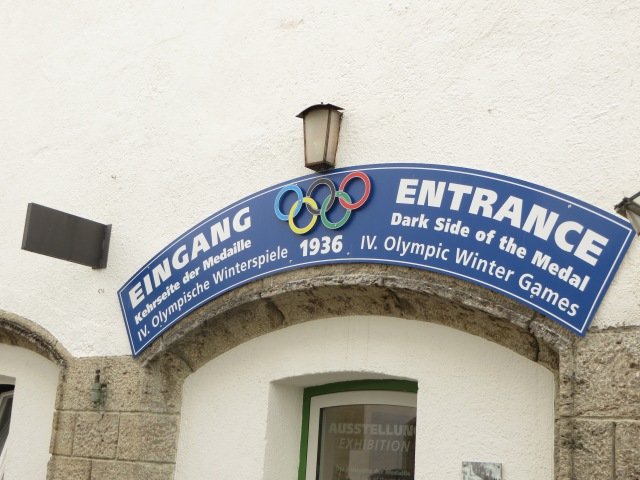It seems especially appropriate right now, while the 2018 Winter Olympic Games are underway in PyeongChang, to take a look back at one of the past Winter Olympics and make some comparisons. Last July, Tanya and Jay visited the site of the 1936 games in the German city of Garmisch-Partenkirchen. 
 The Olympic stadium is still there, as well the modernized ski jumping platforms.
The Olympic stadium is still there, as well the modernized ski jumping platforms. 
 The area is still a winter playground and visitors can just imagine what the games must have been like in those years before the start of World War II. German Chancellor Adolf Hitler opened the games and there would not be a Winter Olympics for another 12 years until St. Moritz hosted them in 1948. Just as in the 1936 Summer Olympics held in Berlin later that year, the clear purpose of these games was to showcase the Nazi regime and its athletic and political superiority rather than today’s games which are more focused on unity and peace.
The area is still a winter playground and visitors can just imagine what the games must have been like in those years before the start of World War II. German Chancellor Adolf Hitler opened the games and there would not be a Winter Olympics for another 12 years until St. Moritz hosted them in 1948. Just as in the 1936 Summer Olympics held in Berlin later that year, the clear purpose of these games was to showcase the Nazi regime and its athletic and political superiority rather than today’s games which are more focused on unity and peace.



One of the highlights of the 1936 games included Sonja Henie of Norway winning her third consecutive Olympic gold medal in figure skating. Alpine skiing was introduced for the first time at these Olympics and the Olympic flame was lit for the first time at a winter games.
.
646 athletes from 28 countries competed in 17 events at the Garmisch Olympics. 80 of the athletes were women. In comparison, there are 2,952 athletes competing in 102 events in PeongChang. The athletes come from 92 countries. Over 45% of all the athletes competing are female and 108 of the 243 athletes on the US team are women.
As for medals, Norway cleaned up at these games, winning the gold medal in 7 of the 17 events and 15 medals overall. Three of Norway’s gold medals were won by one athlete, Ivar Ballangrud, who won three of the four speed-skating events. Ballangrud took the silver in the fourth event. Of the 11 teams winning medals, the US took 1 gold, in the 2-man bobsleigh, and 3 bronze, placing them 8th in the overall medal count.
Of course, the 1936 winter games were much simpler than today’s Olympics. There was no man-made snow in Garmisch, no electronic time keeping, and no drones overseeing the venues. There were no curling events and no multi-million dollar advertising, television and sponsorship deals. There was however fireworks at the closing ceremonies. And, of course, there was the ominous presence of the Nazi party and the foreboding of what was to come. Despite the ever-present danger of North Korea, the PyeongChang games look pretty good in comparison.

Great comparison and some fine photos. Thanks!
LikeLike
Danke, my friends.
LikeLike
Very interesting post, guys! I stayed in Garmisch when I was dating an Army guy back in the 80’s and we crossed over to Austria every day to ski. Beautiful! Your blog brought back memories of that trip.
LikeLike
Thanks, Kathy. It is a beautiful area indeed. Glad this brought back memories for you.
LikeLike